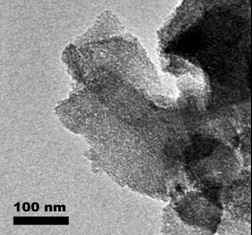
Inorganic chemistry is concerned with the synthesis and reactivity of inorganic and organ metallic compounds. Some advanced areas of inorganic chemistry are the study of materials for environmental remediation, catalysis, energy storage, and nanotechnology. Inorganic chemistry students may choose from a variety of subjects as they select and join one of our world-class inorganic chemistry research groups. Our renowned faculty members are involved in cutting-edge research that involves virtually all areas of inorganic chemistry and many related disciplines. The facilities within the inorganic research laboratories are quite extensive and insure that research is not limited by the availability of instrumentation. Of particular note is the broad energy range covered by the spectroscopic facilities found in the inorganic laboratories (NMR and single crystal CCD detector, X-ray diffract meter, EPR, FTIR, IR, Raman spectrometers).

The Faculty in the Inorganic Division is engaged in the research zeolites and other inorganic materials with three-dimensional pore structures. These materials have been exploited at Sabancı University for the template-mediated synthesis of porous materials. In particular, several mesoporous carbons were obtained by a way of a carbonization method, using natural zeolites as template material. Another area of inorganic chemistry, which has been pursued by members of the ChemistryGroup, is related to the use of low-power microwave heating in order to synthesize high-surface-area, hexagonal mesoporous MCM-41 Materials.
Mesoporous silica-based supports such as MCM-41, SBA-15, etc. have been synthesized for different catalytic applications including production of carbon nanotube with controlled chirality using CVD method, Fischer-Tropsch reaction and isomerization for clean energy, etc. Fundamental studies are also conducted to investigate the chirality control mechanism of carbon nanotube, and the controlling factors of metal incorporation and structural order of the catalysts. Furthermore, development of synthesis strategies of zeolite and zeolite/polymer functional membranes for key applications like gas separations, membrane reactors, membrane distillations, fuel cells, and chemical sensors is another focus of the group. The properties of zeolites, including their internal pore structure, crystal size and morphology, and the interactions between zeolite and polymers are studied in details and controlled carefully in order to generate high performance membranes

Another research area that is conducted under Inorganic Chemistry Division is the synthesis of nanosized metals and metal oxides like Pt, Pd, Ni, TiO2, Fe2O3, SnO2 etc. in both powder and thin film forms. For the synthesis of these materials mainly sol-gel, hydrothermal, and microwave hydrothermal methods are utilized. With these methods, uniform nanoparticles can be obtained and particle size can easily be controlled. Such materials can be used in various areas like water treatment, catalytic convertors, fuel cells, hydrogen storage, and Li-ion batteries. For example, TiO2 is a very strong photo catalyst that is suitable for water treatment and other catalytic reaction. In addition to that, combinations of nanosized transition metal particles have great potential for fuel cell and hydrogen storage applications. Also compounds like Fe2O3 and their derivatives can be utilized in many areas like catalysis and water treatment because of their semiconducting and magnetic properties.
As the Inorganic Chemistry Division, we try to understand the structure, synthesis, and behavior of inorganic materials. Moreover, with the knowledge obtained we try make suggestions to the world’s major problems like energy and water.
